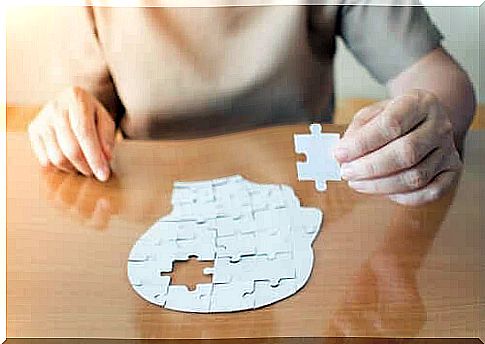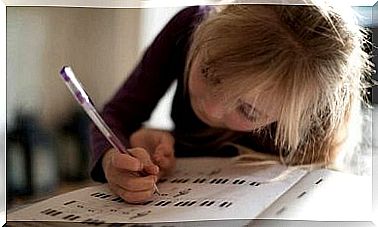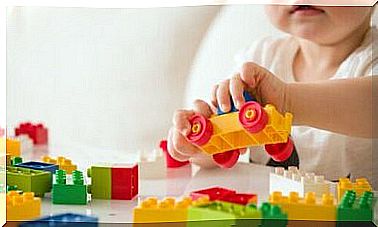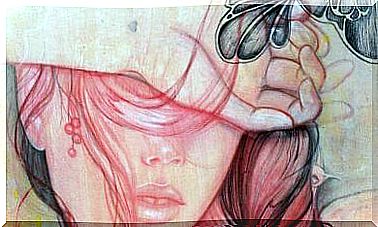Mini-mental Status Test To Detect Possible Dementia

Due to increased life expectancy in today’s society, the prevalence of Alzheimer’s and related diseases has increased dramatically. As such, it is important to have good evaluation instruments. These should be able to detect cognitive impairment conditions quickly and easily. Mini-mental status is one of the tests the experts use most for this task.
Early detection of this disease is very important in order to be able to implement treatments that improve the prospects. Both doctors and specialists in primary care must also have access to such tests. This is especially true given that doctors do not identify approximately 70% of these cases correctly.

Mini-mental status
The mini-mental status test (MMSE, or MMS in Norwegian) evaluates cognitive changes. The goal of doing this is to detect possible cases of dementia. This is a screening instrument. This means that it is the first search in a more involved process. If it gives rise to suspicion, the doctor should follow it up with a more comprehensive test. Depending on the number of points the patient achieves, different types of cognitive functions can be distinguished. These types are normal cognitive function or mild, moderate or severe dementia.
You must also keep in mind that cognitive decline can be a benign and normal occurrence. Mild cognitive decline associated with age is normal. However, there is a difference between this and dementia. The main difference is that the former only affects memory. The latter condition, on the other hand, causes several problems and is at the expense of the person’s ability to continue with his daily lifestyle.
To detect this situation, the mini-mental status test, using the questions, evaluates the different cognitive areas that may be affected. Before starting, the test person explains that they are going to ask the patient some questions. Then they tell them that they are going to ask them to do some tasks. After making sure that the patient is wearing appropriate glasses and headphones to reduce any sensory deficit, the test begins.
Cognitive areas the mini-mental status test evaluates
Briefing
To evaluate time orientation, the doctor asks the person: What day of the week is it today? Can you tell me what month it is? What is today’s date? The year? What season are we in now?
To evaluate spatial orientation, the doctor asks: Where are we? What floor are we on? What street are we on? In which city? What country is this?
Fixation
This test attempts to measure the retention capacity of the subject. To do this, the doctor must explain to them that they are going to tell them three words. The doctor will then repeat the three words. The patient should then try to remember them because the doctor may ask them for the words later. For example, the doctor may ask them to repeat the words “crown”, “horse” and “apple”. They get one point for each correct repetition.
Concentration and calculation ability
- In this test, the doctor asks the individual to count down from 30 at three intervals.
- After that, the doctor asks the patient to repeat the sequence 5-9-2. They have to do this until they learn it. Afterwards, they should be asked to say the numbers the other way around.
Memory
For this part, the doctor asks the patient if they remember the three words they told them before in the fixation test. The doctor gives them one point for each word they remember in any order.

Language and construction
- The medical professional then shows the patient a watch and a pen and asks them to identify the objects.
- The doctor then asks them to repeat the sentence “Never other than if and but”.
They are then asked: “Apples and pears are fruit. So what are cats and dogs? And red and green? ” - After this, the patient is instructed to take a piece of paper in his right hand. They must then fold it and place it on the table. The doctor notes whether they can complete this task or not.
- The doctor then gives the patient a sheet with “close your eyes” written on it. Then they ask the patient to read it and do as it says.
- Afterwards, the patient is asked to write a sentence with a topic and a predicate.
- Another task in this test is where the doctor shows the patient a drawing and asks them to copy it on another piece of paper.
Use of the mini-mental status test
Depending on the performance of each of the tests, the doctor may gain some valuable insight into the patient’s condition. The different points tell them if the person suffers from a certain level of dementia. As we have shown in this article, this test is relatively quick and easy to use.
It is perfect as a screening method, but it will always be necessary to complete the diagnostic process. This requires a more exhaustive evaluation. Nevertheless, its simplicity and its ability to distinguish problems easily make it a very popular test. It is one of the most commonly used evaluations to measure cognitive function and detect dementia.









